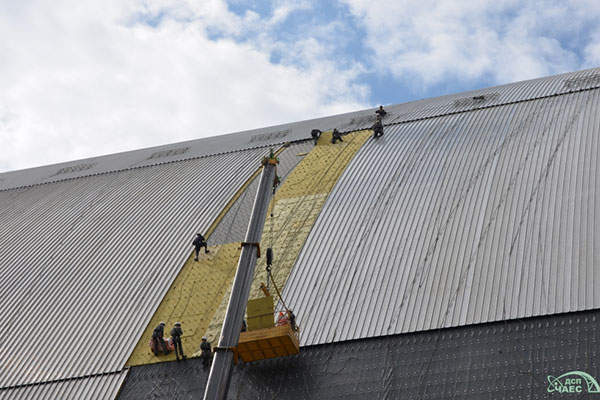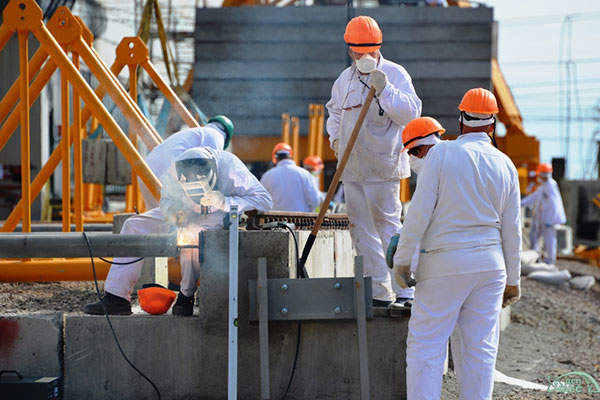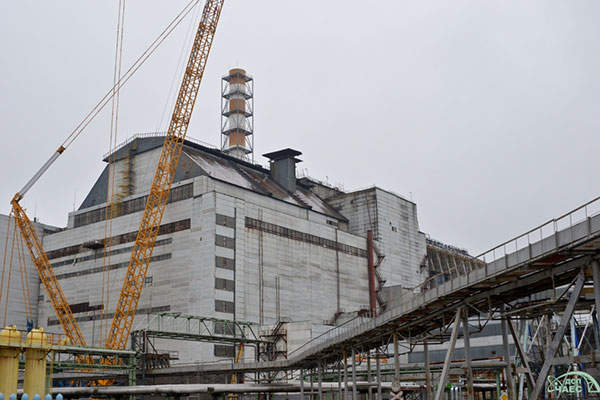Understand the impact of the Ukraine conflict from a cross-sector perspective with the Global Data Executive Briefing: Ukraine Conflict
The Chernobyl New Safe Confinement (NSC) is an arch-shaped structural shelter built to confine the radioactive material at Chernobyl Unit Four, protect the temporary object shelter (sarcophagus) from weather damage and enable the decommissioning of Unit Four.
The €1.5bn ($1.66bn) NSC project was the main component of the €2.1bn ($2.3bn) Shelter Implementation Plan (SIP), a blueprint comprising more than 300 sub-projects aimed at addressing safety and decommissioning works at Chernobyl, which experienced the world’s worst nuclear power plant disaster in April 1986.
The NSC concept was approved in 2004, and construction was initiated in late 2010. The project was overseen by Chernobyl Nuclear Power Plant (ChNPP), a state-owned enterprise responsible for the decommissioning of the Chernobyl plant.
The final commissioning test of the NSC was completed in April 2019, and the structure was handed over to the Ukrainian authorities in July of the same year. ChNPP received a licence from the regulator to operate the NSC in August 2021.
The ChNPP facilities were captured by Russian military forces in February 2022, amid the ongoing crisis involving Russia and Ukraine. State Nuclear Regulatory Inspectorate of Ukraine, a state-owned agency, revealed on 7 March 2022 that the facilities continue to operate safely.
Chernobyl NSC design details
The confinement is made up of 25,000t of metal frame. It measures 108m high and 162m long, with a span of 257m and weight of more than 31,000t. It has a design life of 100 years and rests on a foundation built of approximately 20,000m³ of concrete.
The metal frames are externally clad with three layers of sandwich panels, and each component of the internal frame is covered in polycarbonate to make them resistant to radioactive particles.
The NSC is designed to withstand temperatures ranging between -43°C and +45°C, a class three (one million year) tornado, and a six Medvedev-Sponheuer-Karnik (MSK-64)-scale earthquake.
The facility is equipped with two automated camera-equipped cranes, with a lifting capacity of 50t each, as well as other associated equipment to enable the dismantling of Unit Four.
Construction of the New Safe Confinement
The metal structural components were prefabricated in Italy and assembled at the project site in a specially designed area located west of the existing sarcophagus. The foundation of the assembly area was covered with a concrete slab to minimise radiation exposure for workers.
The first half of the arch was lifted to its complete height in April 2014, followed by the other half in October of the same year. The two halves were successfully connected in August 2015 and tightened using more than 1,000 bolts.
Sliding the entire NSC over the existing Chernobyl sarcophagus was completed in November 2016. An auxiliary building constructed at the foot of the sarcophagus serves as the control centre.
Accommodation facilities were built for more than 1,000 workers at Chernobyl in decontaminated and renovated apartments.
Contractors involved with the safety and decommissioning works at Chernobyl nuclear disaster site
Under a contract awarded in September 2007, Novarka, a 50:50 joint venture (JV) between VINCI Construction Grands Projets and Bouygues Travaux Publics, served as the design and construction contractor for the project.
The JV was assisted by local partners, including UkrEnergobud, UkrEnergoMontazh, Fundament, UkrNiiProyektStalKonstruktsiya, TcentroStalKonstruktsiya and UkrStalKonstruktsiya.
The conceptual design for the NSC was developed by a consortium of Bechtel, EDF and Battelle Memorial Institute.
The arch elements of the NSC were supplied by Cimolai, whereas Par Systems was contracted to supply the main crane systems.
ArcelorMittal supplied 164,000m² of steel for the supporting decks and 12,000t of 40mm rebar for the foundation of the NSC. The profile cutting and oxy cutting of the steel frames were performed by ShapeCut.
Blastrac Ukraine supplied a Blastrac BMG-435W triple-head grinding machine and Blastrac BDC-1330 dust collector for the project. A DRILLFLEX type DF1100 built by HACO Kingsland was used for drilling holes in the structural steel pillars.
The Chernobyl NSC project feasibility study was performed by the ALLIANCE consortium, led by Campenon Bernard SGE and including AEA Technology, Bouygues, SGN, Taywood Engineering and Walter Bau.
Materials testing and analysis company Lucideon tested the individual cladding system components of the project. The contractual scope included designing and building the rigs to test the entire cladding system.
Ukraine-based steel and mining company Metinvest was contracted to provide steel for the NSC.
Other contractors involved in the project were Mammoet, Okyanus, Sefi, Baumert, Actemium, CNIM, Taimweser, Hargreaves Ducting, Tension Control Bolts, AES Systems, TMC Global Professional Services, Koblenz and Kalzip.
Financing for the Chernobyl NSC
The entire Chernobyl SIP was financed through the Chernobyl Shelter Fund, which is managed by the European Bank for Reconstruction and Development (EBRD). The funds were provided by 45 countries and organisations, along with additional contributions from EBRD.








